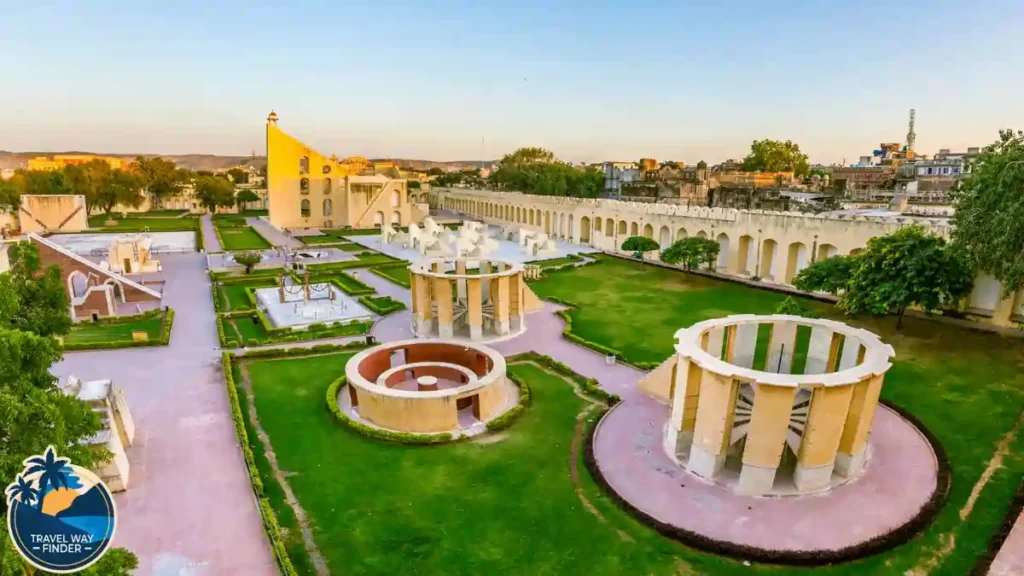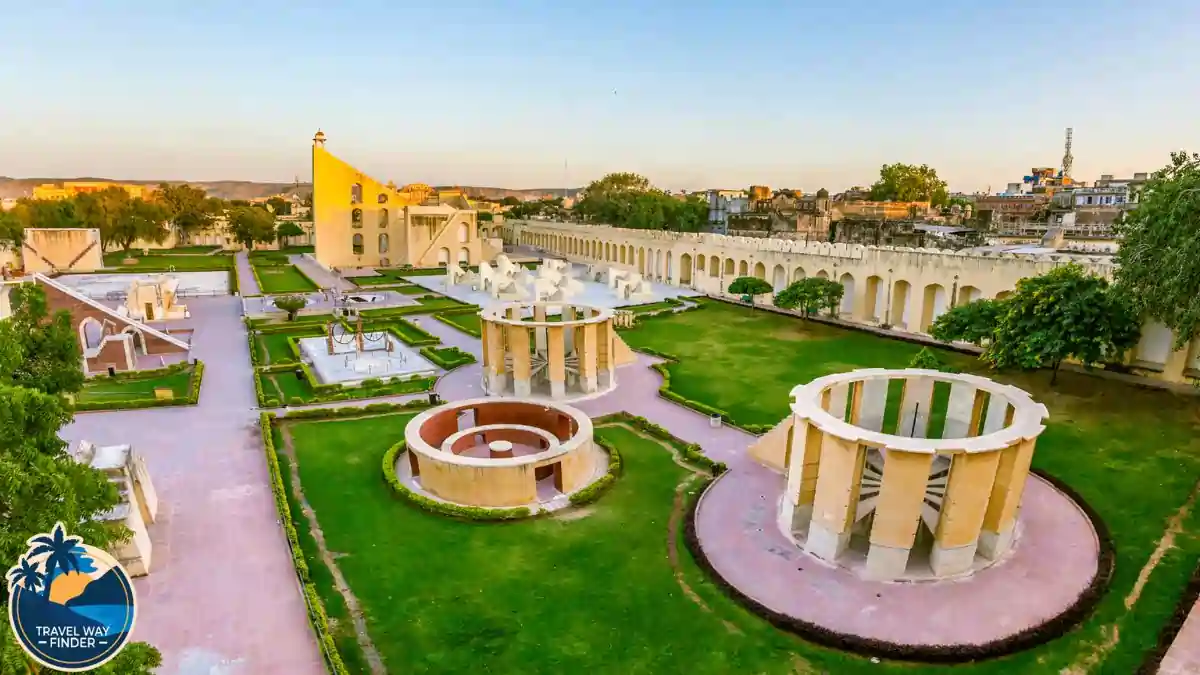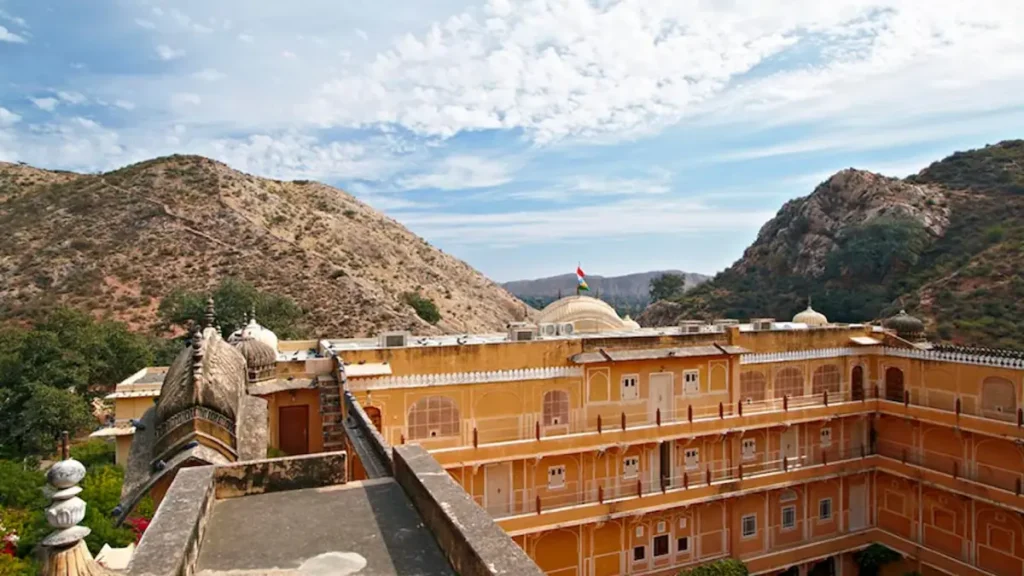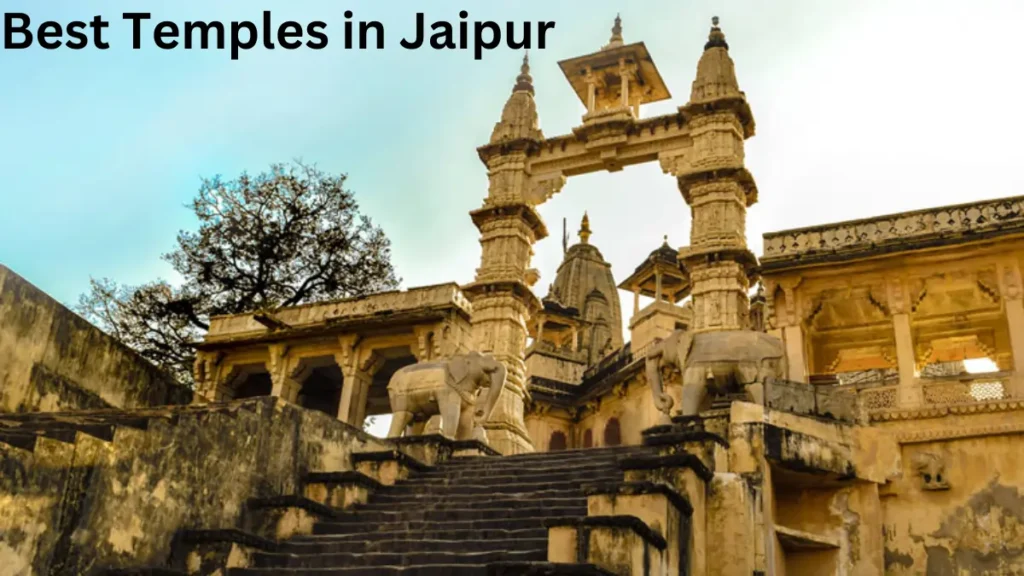Any traveller who visits Jaipur, apart from the City Palace and Hawa Mahal, also sees Jantar Mantar. This is one of the most famous places to see in Jaipur, which is liked to be visited not only by locals or Indians but also by foreign citizens. Jantar Mantar is one of the World Heritage Sites listed by UNESCO. Jantar Mantar of Jaipur is located between the City Palace and Hawa Mahal in the old city. It is an open-air astronomical observatory which is one of the rare and timeless places of attraction in the world. This observatory was far ahead of its time and demonstrated ancient methods of reading the stars and the sky.

Jantar Mantar Location in Jaipur:
- This observatory is located at Gangori Bazaar, J.D.A. It is located at Market, Kanwar Nagar, Jaipur.
Jantar Mantar Entry Fee (Jaipur)
The following are the entry fees for Indian travellers or Foreign travellers:
- ₹50 per person for Indians
- ₹15 per person for Indian Students
- ₹200 per person for Foreign Tourists
- ₹100 per person for Foreign Students
Jaipur Jantar Mantar Timings:
- This Jantar Mantar is open seven days a week. The times to visit here are 9:00 am – 5:00 pm.
Sound and light show timings Jantar Mantar, Jaipur:
- October to February- 6:30 pm onwards
- March to April- 7 pm onwards
- May to September- 7:30 pm onwards
History of Jantar Mantar
Jantar Mantar was built by Maharaja Sawai Jai Singh II to study astronomical phenomena. This is the largest stone-built astronomical observatory not only in India but in the world. During the early 18th century, he built 5 Jantar Mantars in India, in New Delhi, Mathura, Jaipur, Varanasi and Ujjain. Jaipur Observatory is the largest and best preserved among the five observatories. The main reason for building it was that the Maharaja was attracted by the celestial bodies and the movement of various bodies in the sky. This huge structure is spread over 18000 square meters.
Why was Jantar Mantar built?
Jantar Mantar was built to study astronomical phenomena. This creation of Jaipur is a complex of nineteen architectural astronomical instruments which are still in operation and are still used for calculations and teaching. It is used to observe and study orbits around the Sun. Some of the creations here are made of stone, marble and copper. Some of the nineteen instruments are Digansha Yantra, Chakra Yantra, Dakshin Bhitti Yantra, Kanali Yantra, Disha Yantra, and Palabha Yantra etc. Today, Jantar Mantar in Jaipur has been maintained by the Department of Archaeological Sites and Monuments, Rajasthan since 1961.
Things to See in Jantar Mantar
Presently Jantar Mantar in Jaipur has 19 large instruments with particular purposes, the most popular and prominent of which is the Samrat Yantra. It is considered to be the largest sundial in the country. The main attraction of these instruments is to observe celestial bodies with the naked eye. Some of the nineteen instruments are Chakra Yantra, Dakshin Bhitti Yantra, Digansha Yantra, Disha Yantra, Kanali Yantra and Palbha Yantra etc., about which we are going to tell you below-
In Sanskrit, Jantra means ‘instrument’ and Mantra means ‘calculation’ and literally means ‘calculating instrument’.
Observatory instruments help characterize many astronomical phenomena and time changes including planetary declination, predicting eclipses, celestial altitude, measuring time, tracking and locating prominent stars and constellations, and other related astronomical and astronomical Includes navigation etc.
Major equipment installed in Jantar Mantar-
Azimuth instrument– To calculate the time of sunrise and sunset.
Brihat Samrat Yantra– Standing at a height of 27 meters, the world’s largest sundial is known to measure time at an interval of every 2 seconds as per the local time.
Chakra Yantra – To show the four specified times of the day which also matches other major observatories of the world. Greenwich in the UK, Saichen in the Pacific, Zurich in Switzerland and Nakae in Japan).
Compass – To display directions and measurements.
Dakshina Bhitthi Yantra– Altitude and meridian measurement as well as the distance between celestial bodies
Jai Prakash Instrument– Provides an inverted image of the sky, measures altitude and allows the observer to calculate the hour angle as he moves inside the instrument.
Kapila instrument– measures the coordinates of celestial bodies.
Mishra Yantra– Compilation of 5 different instruments.
Nadi Valaya Instrument – Measures time in less than a minute. The two instruments of this instrument face the northern and southern hemispheres respectively.
Pole Star Plate – Locating and observing the Pole Star about other celestial bodies
Ram Yantra – Measuring the height of the Sun.
Rashi Valaya Yantra – Tracking and location of all 12 constellations, showing different zodiac formations.
Revolution circle instrument – Latitude and longitude of celestial bodies.
Shastansh Yantra – A unique 60-degree arc instrument built in the meridian plane with a slightly darkened chamber. It is illuminated daily at noon, with light passing through a pinhole in the chamber thus helping to calculate the diameter, inclination and distance of the Sun.
Small Samrat Yantra – Small sundial at Jantar Mantar and inclined at 27 degrees.
Unnatamsa Yantra – Measurement of celestial bodies.
Yantra Raj Yantra– This huge astrolabe used to calculate the Hindu calendar is considered one of the world’s largest astrolabes.
These different instruments tell about different astronomical events. Jantar Mantar with its exact location and time is beloved by the locals of Jaipur and it is one of the main tourist attractions in Pink City. Let us tell you that apart from Jaipur, Maharaja Sawai Jai Singh II had also constructed Jantar Mantar in New Delhi, Ujjain, Mathura and Varanasi.
FAQs on Jantar Mantar Jaipur
Q1: What is Jantar Mantar in Jaipur?
Ans: Jantar Mantar in Jaipur is an open-air astronomical observatory and one of the World Heritage Sites listed by UNESCO. It was built by Maharaja Sawai Jai Singh II during the 18th century to study astronomical phenomena. The observatory showcases a collection of 19 architectural astronomical instruments.
Q2: Where is Jantar Mantar located in Jaipur?
Ans: Jantar Mantar is located at Gangori Bazaar, J.D.A., Market, Kanwar Nagar, Jaipur, situated between the City Palace and Hawa Mahal in the old city.
Q3: What are the entry fees for Jantar Mantar in Jaipur?
Ans: The entry fees for Jantar Mantar are as follows:
- ₹50 per person for Indians
- ₹15 per person for Indian Students
- ₹200 per person for Foreign Tourists
- ₹100 per person for Foreign Students
Q4: What are the operating hours of Jantar Mantar in Jaipur?
Ans: Jantar Mantar is open seven days a week from 9:00 am to 5:00 pm.
Q5: Are there sound and light shows at Jantar Mantar, Jaipur?
Ans: Yes, there are sound and light shows at Jantar Mantar, Jaipur. The timings are as follows:
October to February: 6:30 pm onwards
March to April: 7 pm onwards
May to September: 7:30 pm onwards
Q6: Why was Jantar Mantar built?
Ans: Jantar Mantar was built by Maharaja Sawai Jai Singh II to study astronomical phenomena. It is a complex of nineteen architectural astronomical instruments used for observing and studying celestial bodies, orbits around the Sun, and various other astronomical calculations.



